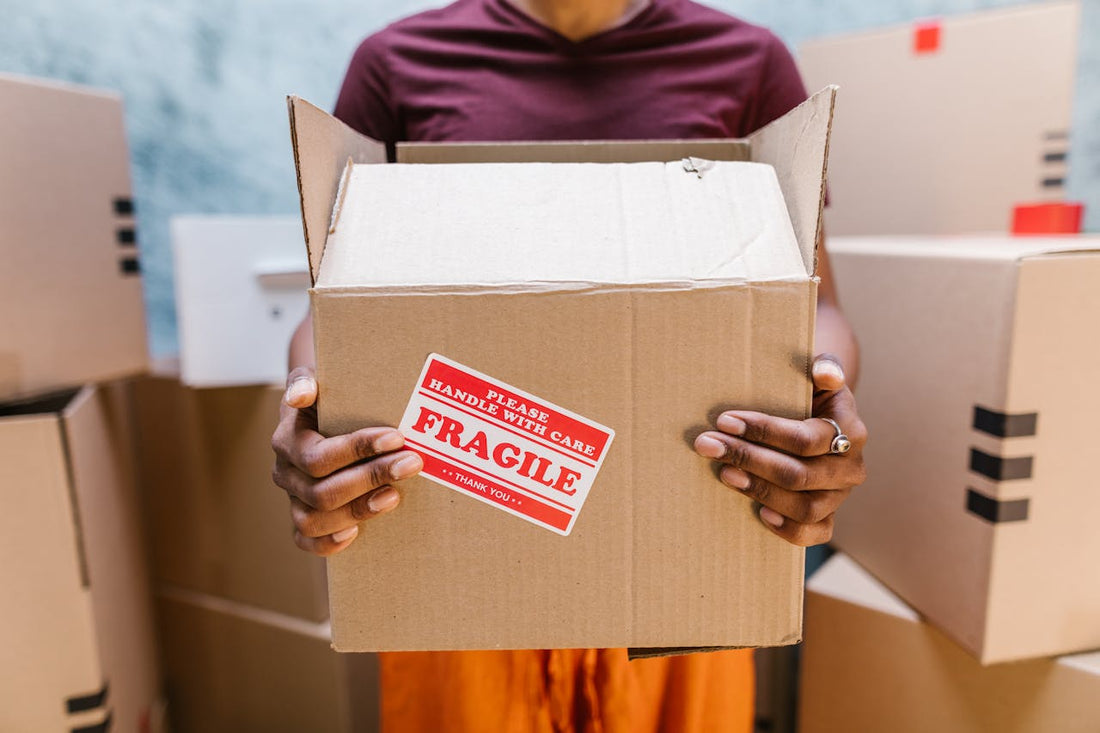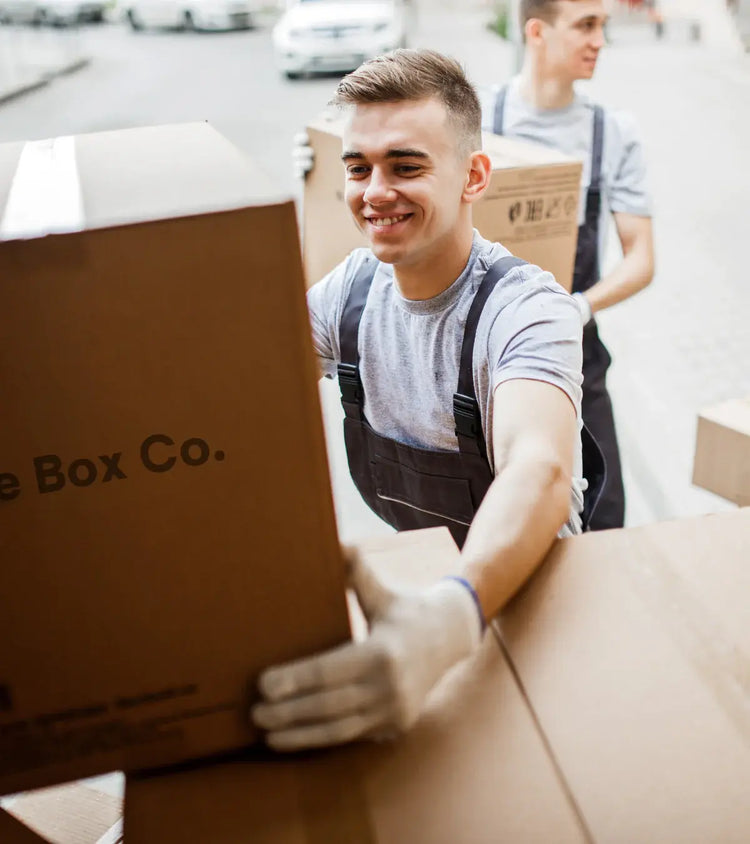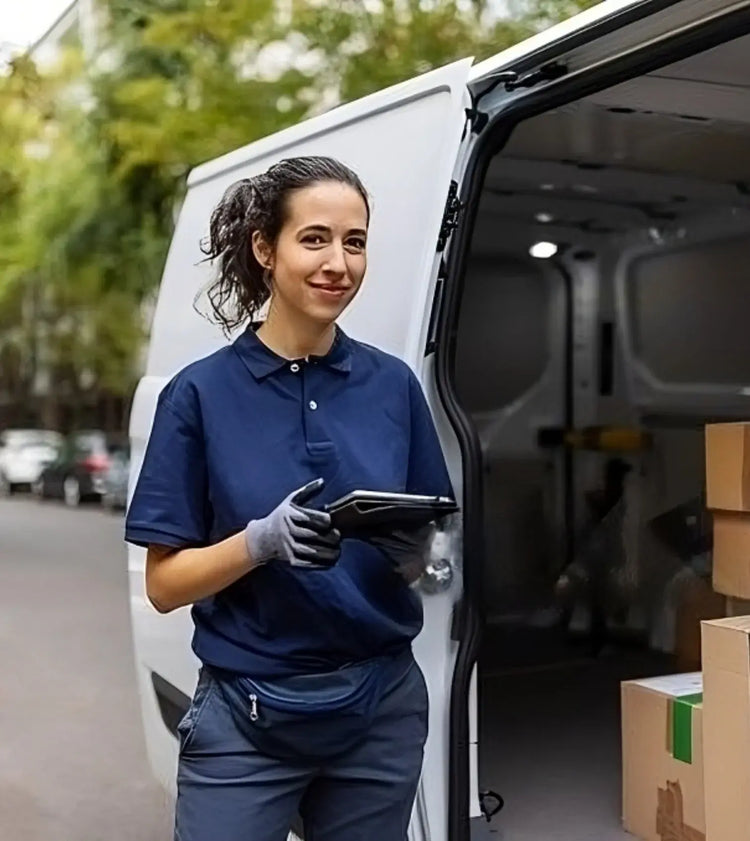
How To Pack Fragile items For Moving House

Share
Packing fragile items for moving house means finding the right packaging materials, padding items carefully and organising boxes strategically.
These belongings will need a little extra attention to make sure they can be transported into your new home in perfect condition. Whether it's delicate glassware, electronics or furniture, knowing what to do can save you (and your belongings) from reaching breaking point. (See what we did there!)
Here, the experts at The Box Co. break down everything you need to know about packing fragile items. Our team of experienced movers have seen it all - so here are our top tips.
Oh, and if you prefer to leave the heavy lifting to the experts, we’re always here to help with our professional removal services, starting from just £199 per move. Simply get in touch with hello@theboxco.co.uk to find out more.
Why Is It Important to Pack Fragile Items Carefully?
Fragile items are prone to breaking during transport due to how delicate they are.
Moving involves a lot of handling, and without proper preparation, these items can easily break. From chipped plates to shattered glassware, accidents during a move can happen. And they are not only costly, but can also be emotionally draining.
But here's the secret: The key to keeping your fragile items safe lies in proper packing.
By using the right materials and techniques, you can significantly reduce the risk of damage. This is where preparation is key - something we at The Box Co always prioritise.
The Best Materials To Pack Fragile Items
Before you begin packing, start by making sure you have all the right materials.
High-quality packaging is important to protect your items from damage. Start with sturdy cardboard boxes, preferably double-corrugated for extra strength. These boxes are less likely to collapse under weight or pressure, keeping whatever is inside them secure during transport.
Packing tape is another important tool that is regularly overlooked. Make sure you layer the bottom of each box with multiple strips of tape to prevent the box from giving way. There's nothing worse than lifting a box and then having it collapse in your arms.
Bubble wrap, packing peanuts, and packing paper are also must-haves. These materials cushion your items and absorb any shocks or vibrations during transport. If you're moving long-distance, these can be total lifesavers.
If you’re unsure about what you need, The Box Co has a whole shop full of high-quality packing supplies that you can easily order online.
The Best Way To Pack Fragile Items
When it comes to packing fragile items, there’s no one-size-fits-all approach.
The method you choose should depend on the type of item you’re packing. However, there are some principles you should follow to keep your things secure.
Start by preparing your boxes. Line the bottom with a thick layer of cushioning material like bubble wrap, foam, or packing paper. This base layer will absorb any impact and provide a soft cushion for your fragile items.
For glassware, wrap each piece individually in packing paper before adding a layer of bubble wrap. Fill any hollow spaces, like the inside of glasses, with packing paper to reduce vibrations.

Plates should be packed vertically, as this reduces surface area stress and lowers the risk of cracks. Use cardboard dividers to separate delicate items and prevent them from bashing into each other during transit.
When packing electronics like TVs or monitors, use their original boxes if possible. These will likely be designed to support the item when being transported - if you still have it, dig it out!
If you no longer have them, wrap the screen in bubble wrap and secure it with a thick blanket or towel. For oversized or more uniquely shaped items, improvise by wrapping them in bubble wrap and using flexible cardboard to make them snug and secure in their boxes.
See a summary here:
| Item Type | Packing Tips | Materials Needed |
|---|---|---|
| Glassware | - Wrap each piece individually with packing paper and bubble wrap. - Fill hollow areas with packing paper. - Use cardboard dividers to separate pieces. |
Bubble wrap, packing paper, cardboard dividers, strong tape. |
| Plates | - Wrap plates individually with bubble wrap. - Pack vertically in the box to reduce surface area stress. - Use crumpled packing paper to cushion between plates. |
Bubble wrap, packing paper, small sturdy boxes. |
| Electronics | - Use original boxes if available. - Wrap screens in bubble wrap and secure with a blanket. - Label cables and pack separately. |
Original boxes (if available), bubble wrap, blankets, tape, bungee cords. |
| Vases & Jars | - Fill hollow spaces with packing paper. - Wrap entirely with bubble wrap. - Secure with tape and pack snugly. |
Packing paper, bubble wrap, packing peanuts. |
| Mirrors & Artwork | - Place cardboard sheets on both sides. - Wrap with bubble wrap. - Transport upright to minimise risk. |
Cardboard sheets, bubble wrap, strong tape, blankets. |
| Furniture | - Disassemble where possible. - Wrap pieces in padded blankets or bubble wrap. - Secure with tape or bungee cords. |
Bubble wrap, blankets, tape, bungee cords. |
| Stemware | - Wrap stems with bubble wrap first. - Wrap the entire glass with packing paper. - Use dividers to keep pieces separated. |
Cardboard dividers, bubble wrap, packing paper, small boxes. |
| Ceramics | - Wrap handles and delicate parts separately. - Use packing paper and bubble wrap. - Place crumpled paper around items for cushioning. |
Packing paper, bubble wrap, small sturdy boxes. |
| Bowls | - Nest bowls of different sizes with packing paper between each. - Wrap the entire set and secure with tape. |
Packing paper, bubble wrap, tape. |
| TVs | - Use the original box if available. - Wrap with bubble wrap and secure with a blanket. - Keep upright during transport. |
Original box (if available), bubble wrap, blankets, tape, bungee cords. |
| Antiques | - Clean thoroughly before wrapping. - Wrap delicate surfaces in bubble wrap. - Use custom-sized cardboard if needed for odd shapes. |
Bubble wrap, custom cardboard pieces, tape. |
If you’re feeling overwhelmed, our professional moving team at The Box Co can expertly handle your bulky fragile items, making sure they’re moved with precision and care. Simply get in touch with hello@theboxco.co.uk to get your free quote today.
Don’t Overpack or Underpack Boxes
One of the most common mistakes people make when they pack fragile items is overpacking boxes.
While it’s important to make use of space, cramming too many items into one box will make it much more prone to damage. Overloaded boxes can collapse due to the weight, making them much less secure.
On the other hand, underpacking is also bad as it leaves too much empty space. This means items can move around during transit, which may cause them to crash into each other and break.
To stop this, fill gaps with packing peanuts or foam. This creates a snug fit that keeps your items secure. Remember, a well-packed box is neither too loose nor too full - it strikes the perfect balance between space and protection.
Labelling Boxes with Fragile Items
So you have everything packed up - now here's an important step: labelling!
Labelling is a simple yet important step when you pack fragile items. Clearly mark all boxes containing delicate belongings with the word "FRAGILE" on every side. This tells movers, whether it’s your friends or a professional team like ours at The Box Co, that they need to handle these boxes with extra care.
It’s also helpful to show which side of the box should face up. This stops items from being placed upside down or stacked incorrectly during transport.
Good labelling can be the difference between a good move and a total disaster!
Protecting Furniture and Larger Fragile Items
Fragile items aren’t just glassware and plates. Furniture and larger items, like mirrors and antiques, also need careful handling.
When moving these items, disassemble them where possible to make them easier to transport. Wrap each piece in bubble wrap or padded blankets, securing them with tape to keep them steady.
For mirrors and artwork, place a sheet of cardboard on either side of the item and wrap it in bubble wrap. These items should always be transported upright to reduce the chance of damage.
Preparation is Key
Preparation is key when it comes to a smooth move.
Make notes of your fragile items before you start packing. This can help you plan how they’ll be transported and means you know you'll have enough materials to protect them properly.
Set aside plenty of time as well. Rushing means you're more likely to make mistakes, which can lead to broken things. By taking an organised approach, you’ll save yourself stress on moving day.
Let The Box Co Handle Your Fragile Items
Packing fragile items can feel like an overwhelming task, but it doesn’t have to be. At The Box Co, we specialise in providing professional removal services that take the stress out of your move.
Our experienced team uses industry-leading techniques and materials to pack fragile items with care, so you can have peace of mind knowing your belongings are in safe hands.
Whether you need help with packing, transport, or unpacking, we’re here to make your move seamless. Don’t risk damaging your prized possessions - trust The Box Co to handle your fragile items with expertise.
To get your free quote, email hello@theboxco.co.uk today.



